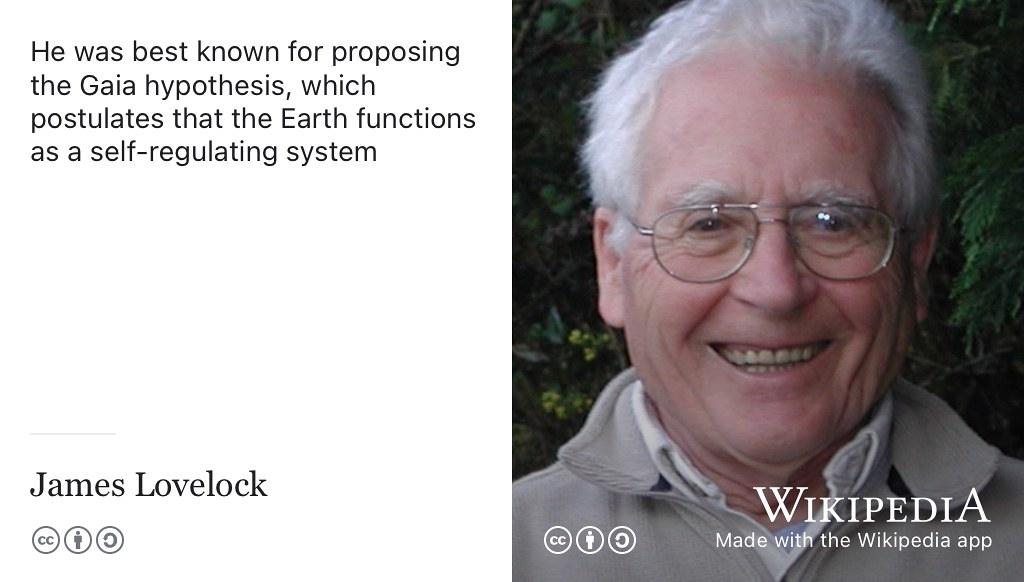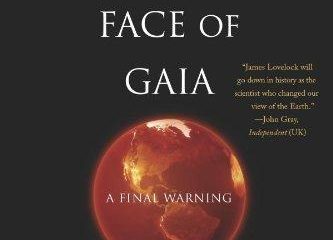Step into the fascinating world of James Lovelock’s Gaia theory, a captivating concept that explores the intricate interconnectedness of our planet. Join us as we delve into the depths of this groundbreaking theory, unveiling its secrets and implications for our understanding of Earth’s complex systems. Let’s embark on a journey of discovery and enlightenment as we unravel the mysteries of Gaia alongside the visionary scientist James Lovelock.
Table of Contents
- 1. Unveiling the Gaia Theory by James Lovelock
- 2. The Interconnected Web of Life: Understanding Gaia’s Principles
- 3. Applying Gaia Theory: Practical Recommendations for Environmental Stewardship
- 4. Gaia Theory in the Modern World: Implications and Future Perspectives
- Q&A
- Final Thoughts
1. Unveiling the Gaia Theory by James Lovelock
James Lovelock’s Gaia Theory presents a captivating perspective on the interconnectedness of Earth’s ecosystems. It proposes that our planet functions as a self-regulating organism, maintaining conditions suitable for life. This revolutionary concept challenges traditional views of Earth as a passive environment, highlighting the dynamic interactions between the atmosphere, oceans, and biosphere.
Key concepts in Lovelock’s theory include:
- Homeostasis: The Earth system works to regulate internal conditions to support life.
- Feedback loops: Interactions between living organisms and their environment create feedback mechanisms that influence Earth’s overall stability.
- Adaptability: Gaia responds to external changes, evolving to maintain balance and sustainability.

2. The Interconnected Web of Life: Understanding Gaia’s Principles
In the realm of ecological science, the concept of Gaia’s Principles emerges as a captivating theory that delves into the intricate interconnectedness of all life forms on Earth. Inspired by the visionary work of James Lovelock, this theory posits that the planet Earth functions as a single, self-regulating organism, maintaining conditions conducive for life to thrive harmoniously. At its core, Gaia’s Principles celebrate the profound synergy between all living beings, illustrating how each entity plays a vital role in sustaining the delicate balance of the biosphere.
<p>By exploring the interplay between the lithosphere, hydrosphere, atmosphere, and biosphere, enthusiasts of <strong>embodied ecology</strong> embrace the essence of Gaia's Principles. This holistic approach invites us to contemplate our interconnectedness with nature, urging us to nurture and protect the web of life that sustains us all. As we delve deeper into the interconnected web of Gaia, we are beckoned to honor the intricate dance of ecosystems, where each species, each element, contributes to the grand symphony of life on Earth.</p>
3. Applying Gaia Theory: Practical Recommendations for Environmental Stewardship
James Lovelock’s Gaia theory offers profound insights into our interconnectedness with the environment, emphasizing the importance of adopting sustainable practices. To translate this theory into actionable steps for environmental stewardship, individuals and communities can implement practical recommendations to nurture and protect our planet.
- Embrace Renewable Energy Sources: Transitioning to renewable energy such as solar, wind, and hydro power can significantly reduce carbon emissions and lessen our impact on the environment.
- Cultivate Biodiversity: Encourage the growth of diverse plant species and protect various ecosystems to promote resilience in the face of climate change and habitat destruction.
- Reduce Single-Use Plastics: Minimizing the use of disposable plastics can help mitigate pollution in oceans and landfills, safeguarding marine life and ecosystems.
| Recommendation | Impact |
|---|---|
| Embrace Renewable Energy | Reduces carbon emissions |
| Cultivate Biodiversity | Promotes ecosystem resilience |
| Reduce Single-Use Plastics | Minimizes pollution |
By heeding the principles of Gaia theory and integrating these recommendations into daily practices, we can contribute towards a more sustainable future for our planet, fostering harmony between humanity and nature.

4. Gaia Theory in the Modern World: Implications and Future Perspectives
Certainly! Here is the content for the “” section:
Exploring the interconnected web of life through the lens of Gaia Theory opens up a world of possibilities for understanding our place in the universe. By recognizing the Earth as a self-regulating system, we are prompted to rethink our relationship with nature and embrace a more holistic approach to sustainability.
Embracing the Gaia Theory not only sheds light on the intricate balance of ecosystems but also challenges us to take responsibility for our actions. It urges us to consider how our decisions impact the planet and encourages us to strive for harmony between human activities and the natural world. By aligning ourselves with the principles of Gaia, we pave the way for a future where coexistence and mutual flourishing are at the core of our values.
Q&A
**Q&A: Exploring James Lovelock’s Gaia Theory**
Q: What is the Gaia Theory proposed by James Lovelock?
A: James Lovelock’s Gaia Theory suggests that the Earth functions as a self-regulating system, much like a living organism, maintaining conditions suitable for life.
Q: How does the Gaia Theory redefine our understanding of the Earth?
A: The Gaia Theory challenges traditional views of the Earth as a passive environment by portraying it as a dynamic and interconnected entity capable of regulating its own environment.
Q: What evidence supports the Gaia Theory?
A: Evidence supporting the Gaia Theory includes the Earth’s ability to regulate temperature, atmospheric composition, and ocean salinity to sustain life over billions of years.
Q: How does the Gaia Theory influence environmental awareness?
A: The Gaia Theory encourages a holistic view of the planet, emphasizing the importance of preserving Earth’s ecosystems to maintain planetary health and balance.
Q: What implications does the Gaia Theory have for humanity’s relationship with the environment?
A: The Gaia Theory underscores the interconnectedness between human activities and the Earth’s well-being, highlighting the need for sustainable practices to ensure the health of our planet and future generations.
Q: In what ways can the Gaia Theory inspire actions for environmental conservation?
A: By recognizing the Earth as a living system, the Gaia Theory motivates individuals and societies to take responsibility for environmental stewardship and adopt practices that promote the well-being of the planet.
Final Thoughts
As we delve into the intriguing realm of James Lovelock’s Gaia theory, we are reminded of the interconnectedness of our planet and its living systems. Lovelock’s visionary concept challenges us to view Earth not merely as a collection of separate entities but as a complex, self-regulating organism. By exploring the profound implications of Gaia theory, we gain a deeper appreciation for the delicate balance that sustains life on our magnificent planet. Let us reflect on Lovelock’s enduring wisdom and continue to nurture our precious home, mindful of our role within the intricate web of existence. Embrace the interconnectedness of Gaia, for in understanding and respecting our planet, we empower ourselves to create a more harmonious future for all beings.


0 Comments